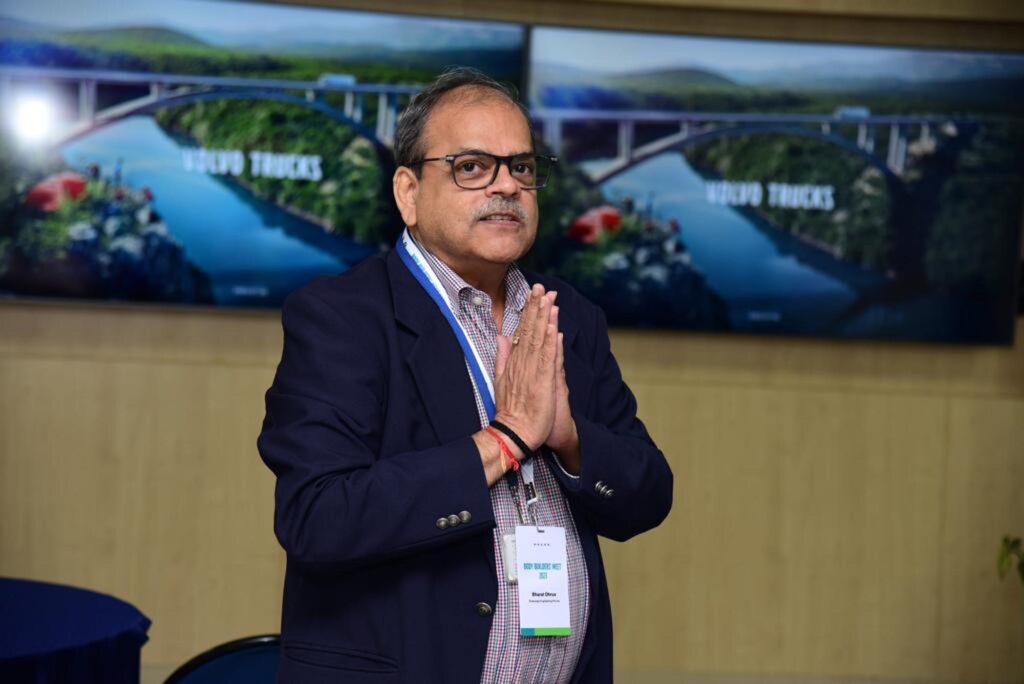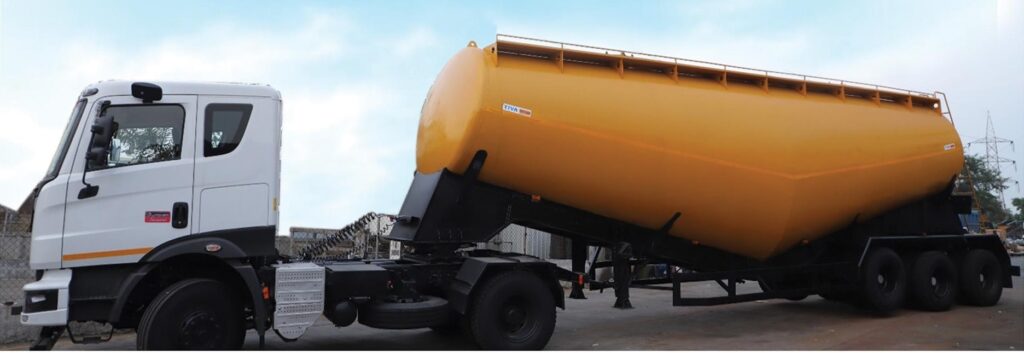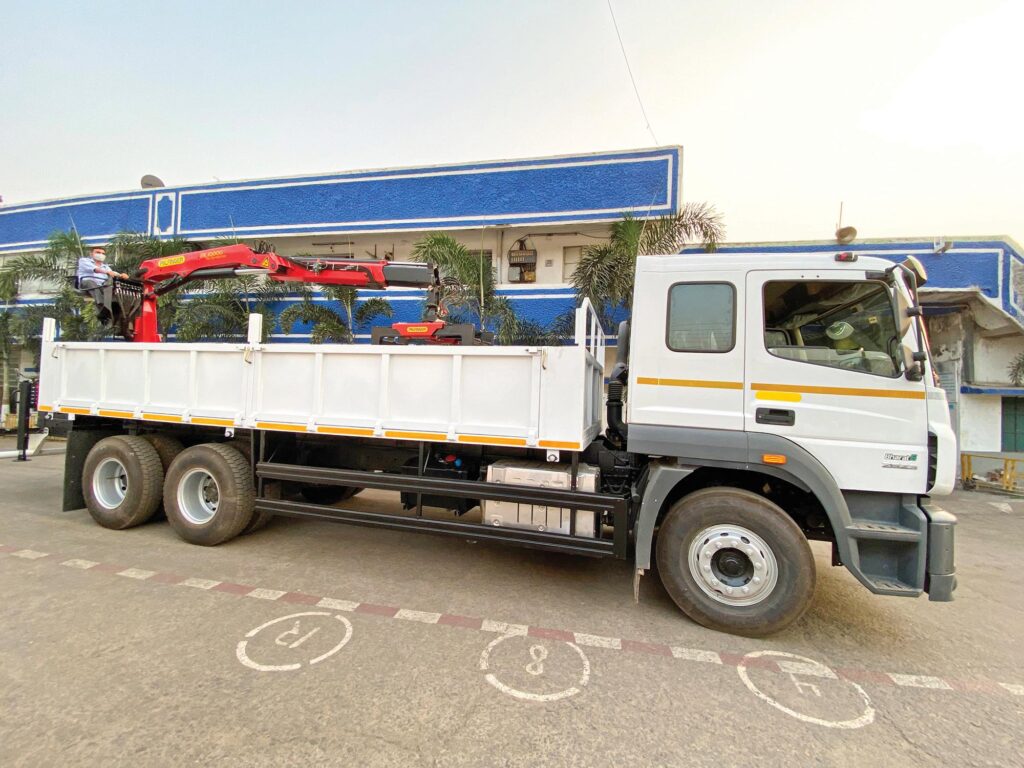Insights from industry veteran Bharat Dhruv

In an exclusive conversation, Bharat Dhruv, a growth strategy consultant and technical advisor with over 36 years of experience in the Indian automotive sector, unearths several key insights during his discussion with Rajesh Rajgor. The dialogue showcases the rapid technological evolution within the Indian truck and trailer industry, featuring innovations such as remote wireless controls, advanced cameras, and sensors that enhance safety and operational precision. These advancements, coupled with the adoption of alternative fuels and a significant shift towards electric vehicles, promise a more efficient and environmentally conscious future for the sector. Additionally, specialized sectors like car carriers, cement, and steel movement have experienced notable transformations in logistics and materials handling, driven by lighter yet stronger steel and innovative applications. Safety standards and regulatory compliance are also evolving, emphasizing the importance of vehicle maintenance, driver training, and cargo security. The industry’s growth prospects appear promising, with increased demand stemming from government investments in infrastructure and defense vehicles, presenting both challenges and opportunities for application developers. Furthermore, the industry is actively addressing environmental concerns by embracing sustainability practices, alternative fuels, and electric vehicles, necessitating close collaboration between application developers and truck OEMs to achieve these goals.
How is technology, including truck-mounted applications and connected logistics, driving innovation and efficiency in the Indian truck and trailer industry, and what impact is it having on the transportation of goods?
The integration of remote wireless controls, advanced cameras, and sensors in commercial vehicles is transforming the industry. These innovations enhance operator safety and operational precision, offering a better view of the operating area while minimizing the risk of errors. Additionally, advanced special steel, known for its lightweight and strength, allows for high-capacity applications on smaller chassis platforms, improving logistics and efficiency. Hydraulics and stabilizing platforms, exemplified by concrete pumps on chassis, add flexibility to truck-mounted applications.
In the electric vehicle sector, faster charging devices and battery capacity innovations are revolutionizing the industry, offering extended drive times and reduced operating costs. Advanced Driver Assistance Systems further enhance safety. Volvo India’s zero unscheduled maintenance goal, facilitated by fleet management software, ensures optimal vehicle performance. Companies like ZF and Tata International Vehicle Applications are pioneering intelligent systems to enhance trailer safety and efficiency. Firestellar Technologies’ advanced control panels aid operations and data analysis, reflecting the cutting edge of innovation in commercial vehicles and automotive systems. These advancements promise a safer, more efficient future.
What are the challenges and opportunities in specialized sectors like car carriers, containers, cement, and steel movement within the Indian truck and trailer space, and how are companies addressing them?
In various specialized transportation sectors, including car carriers, two-wheeler carriers, and truck carriers, companies have shifted towards using tractors and trailers, effectively reducing transportation costs per unit. Notable companies in these sectors have equipped their fleets with GPS systems to streamline inventory tracking. Similarly, within the Cold Chain Sector, companies have widely adopted tractor-trailers, with the integration of temperature sensors allowing real-time monitoring of goods during transit—a feature well-received by customers. Industries such as cement transportation and steel coil transportation have also seen the transition to bulkers on trailers, along with improved loading techniques and enhanced lashing systems to minimize damage during transit.

The trend of adopting lighter yet stronger steel is prevalent across various industries, including Aerial work platforms and construction. Companies like Gemini Power Hydraulics have partnered with international designers to create safer and lighter Aerial Work Platforms (AWPs). Additionally, Sub Zero Insulation Technologies has gained machinery and fabrication expertise from Israel. Collaborations between companies like Nandan GSE and Hydrolift have led to unique applications, combining crane and scissor platform functionalities on a single truck. For continued progress, closer collaboration between these application developers and truck OEMs is essential to address specific requirements, such as the placement of power take-off units, exhaust systems, and hydraulic components, thereby optimizing trucks for specialized applications.
As the construction of buildings and factories continues to embrace vertical growth, the demand for fire tenders with increased reach has surged within the fire sector. Notably, application developers such as Fireescape Engineering and Schwing Stetter have joined forces to pioneer groundbreaking water towers, a novel concept reminiscent of concrete boom applications. These innovative water towers represent a first-of-its-kind development in India, addressing the evolving needs of fire departments in responding to fires in tall structures and contributing to enhanced safety and firefighting capabilities.
How are safety standards and regulatory compliance evolving in the truck and trailer industry in India, especially concerning vehicle maintenance, driver training, and cargo security?
Safety has emerged as a top priority within the automotive industry, with manufacturers such as truck OEMs and application builders going beyond regulatory requirements to enhance customer safety. They are investing in driver and operator training to ensure competence in handling advanced vehicle technology. This includes the implementation of virtual training systems and, in some instances, the adoption of driver training simulators. Vehicle safety is a multifaceted approach that encompasses features working in conjunction with safety cages, seatbelts, and airbags to absorb striking forces, thereby preventing accidents and injuries and safeguarding both the vehicle and its occupants.
Application developers play a crucial role in ensuring vehicle stability during operation by considering the center of gravity (CG) of the truck and application body. They have access to international software like TrailerWin, which provides critical data for optimizing the application’s design. Some developers are integrating control panels with lock and key systems, accessible only to authorized personnel, which could potentially become a regulatory standard to enhance application safety.
In 2023, the government mandated fitness certificates for commercial vehicles, obtained through rigorous inspections to assess roadworthiness and safety compliance. This initiative aims to ensure the safety of commercial vehicles on the road, thereby reducing accidents and breakdowns. Additionally, stringent regulations covering vehicle emission standards, electrification, safety standards, and roadworthiness have been put in place to compel manufacturers and end users to adhere to established rules. India’s vehicle enforcement and compliance program encompass new vehicle type approval, conformity of production (COP), and inspection and maintenance programs like Pollution Under Control (PUC) programs, carried out by government-owned autonomous testing agencies across the nation.

What are the current market trends and growth prospects in the Indian truck and trailer sector, and what factors are influencing the industry’s trajectory?
The demand for commercial vehicles across various industries is experiencing significant growth in India, fueled by substantial government investments in infrastructure expansion, including highways, airports, railways, and metro systems. This burgeoning demand extends to specialized vehicles such as rail cum road vehicles, ground support vehicles for airports, and specialized vehicles for elevated road and rail construction projects. Moreover, there is a notable uptick in demand for domestically manufactured defense vehicles, marking a shift from previous imports. However, the design, development, and execution of defense vehicles face long lead times, leading to a shortage of application developers in this sector. As a response to the Atma Nirbhar Bharat Policy for the defense sector, some private-sector application developers are considering the potential to venture into developing and supplying defense applications, further contributing to the evolving landscape of India’s commercial vehicle industry.
How is the truck and trailer industry in India responding to environmental concerns, such as emissions reduction and sustainable transportation practices, collaboration, and foreign JV and what role does technology play in achieving these goals?
The commercial vehicle industry is undergoing a transformation towards environmentally friendly practices, including the adoption of alternative fuels such as LPG, CNG, Hydrogen Fuel Cells, Biogas, Biodiesel, Synthetic Fuel, Ethanol, and Methanol. Simultaneously, there’s a rapid shift from Internal Combustion Engines (ICE) to Electric Vehicles (EVs), necessitating substantial modifications at the application level to align with EV trucks. This transition calls for extensive collaboration between application developers and truck OEMs to ensure compatibility and effective monitoring, with the potential to leverage connections from CAN Bus/ECUs provided by the truck OEMs.
However, as new emission norms dictate modifications to truck OEMs’ exhaust systems with catalytic converters and the use of Adblue, the challenge emerges for Hi-Tech applications featuring Hydraulic Stabilizers, particularly in mounting outrigger Hydraulic Cylinders for vehicle stability during application usage. Urgent interaction and cooperation between Truck OEMs, design, and service departments, along with application developers, are crucial to address the specific requirements of these niche and growing markets.